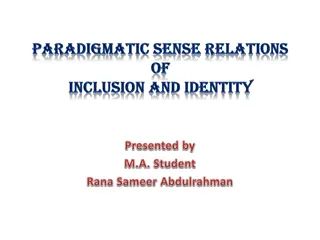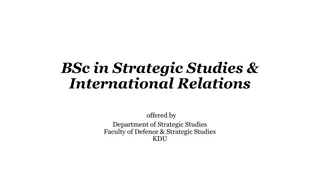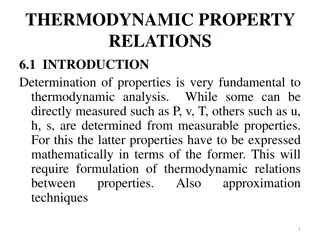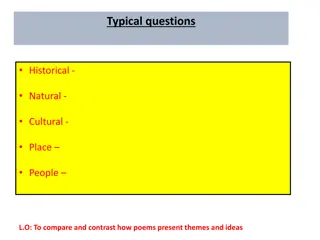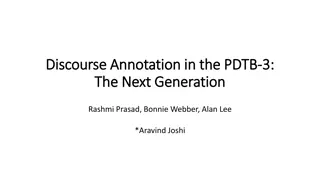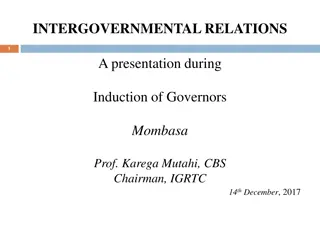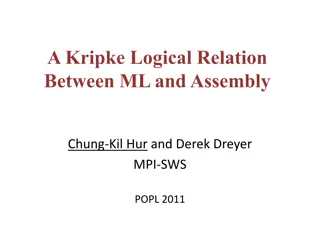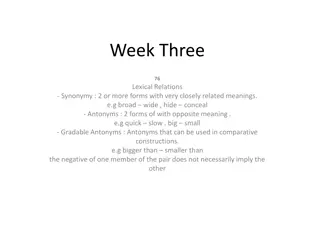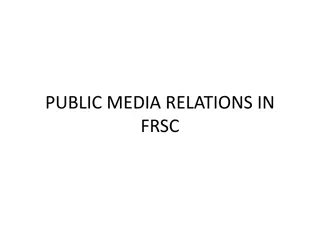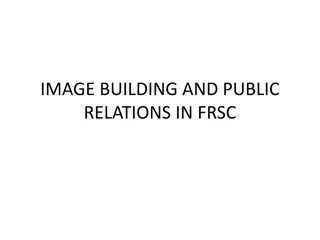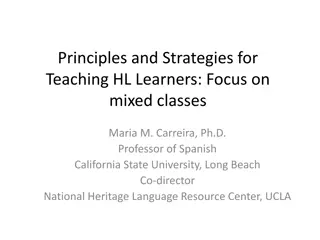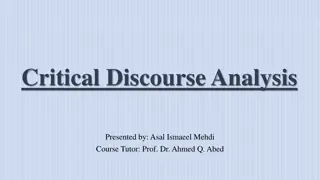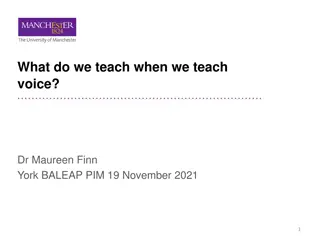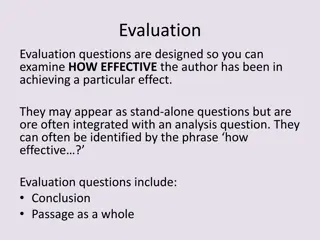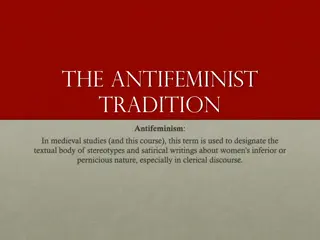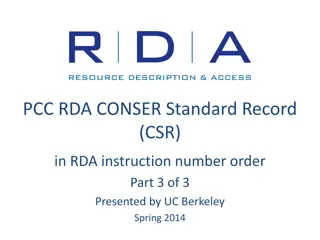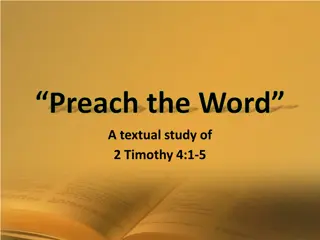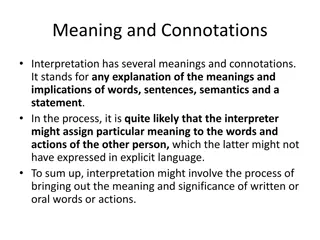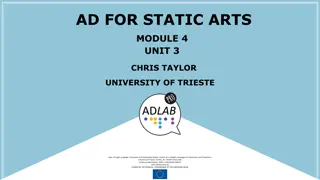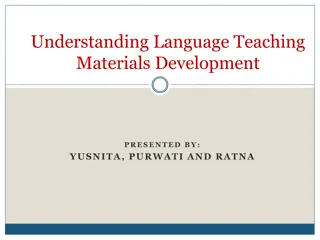Understanding Textual Relations in Language Teaching
Explore different types of textual relations such as lexical cohesion, grammatical cohesion, and more in language teaching. Learn how sentences are related through vocabulary, synonyms, general terms, and pronouns to enhance understanding and coherence in writing. Examples from the Grasping Textual Relation series offer insights into practical applications.
Download Presentation

Please find below an Image/Link to download the presentation.
The content on the website is provided AS IS for your information and personal use only. It may not be sold, licensed, or shared on other websites without obtaining consent from the author. Download presentation by click this link. If you encounter any issues during the download, it is possible that the publisher has removed the file from their server.
E N D
Presentation Transcript
Grasping Textual Relation Teacher Anothai Wannathong SRINAGARINDRA THE PRINCESS MOTHER SCHOOLPHUKET Under the Royal Patronage of Her Royal Highness Princess MahaChakriSirindhom
Grasping Textual Relation LEXICAL COHESION GRAMMATICAL COHESION LEXICAL COHESION GRAMMATICAL COHESION
Grasping Textual Relation LEXICAL COHESION In this type the sentences are related through VOCABULARY by :
Grasping Textual Relation a. Repeating the words or phrases Birds are also animals that have backbones. Birds are of many different kinds, sizes, colors, and shapes, yet they are all alike in certain ways that help us to identify them as birds. All birdshave feathers .
Grasping Textual Relation b. Using synonyms or near synonyms Reading is a primary avenue to knowledge. For some the path is wide, paved straight with all road signs where they should be.
Grasping Textual Relation c. Using a more general term to refer to the thing, action, etc, that has already been mention earlier, and voice versa.
Grasping Textual Relation c. Using a more general term to refer to the thing, action, etc, that has already been mention earlier, and voice versa. Nancy , who is in the fourth grade, does not feel good today. The poor girl has a sore throat. Since it is a rainy day, the child probably caught cold on her way to school.
Grasping Textual Relation GRAMMATICAL COHESION In this type the sentences are related through the use of
Grasping Textual Relation a. Pronouns : he, his, him, they, their, them, etc. A baby elephant is the biggest of all land babies. A newborn baby weighs more than two hundred pounds. It is about three feet high. The new baby is strong, too. Almost as soon as it is born, it can walk about.
Grasping Textual Relation b. Demonstratives : this, these, that, those, here and there. He broke his left leg a week ago. This kept him from joining the camping trip.
Grasping Textual Relation c. Comparatives kilo less, but his sister weighed more. Tom weighed 60 kilos. His brother weighed one
Grasping Textual Relation d. Summary words : process, procedure, measure, problem, idea, definition, quality She is clever, gentle and kind-hearted. These are the qualities which attracted everyone around her.
Grasping Textual Relation e. Noun / Verb Substitutes : so, one, not, do, does 1. Larry passed the test, but not Kim. 2. I enjoy playing badminton. My husband does, too.
EXERCISE 1. Country homes and city homes in Japan can be quite different, just as they can be in the United States. Japanese who live in the country usually have small, one-story homes with from one to four rooms. These rooms are separated by sliding paper screens which act as doors and walls. Most city people have at least one Western-style room. These Japanese generally live in apartments. Their apartments are heated by gas or oil and have thicker walls than do the country homes. a. Japan a. Japan c. Room c. Room b. Japanese d. Apartment b. Japanese d. Apartment
EXERCISE 2 Most people think that home is the safest place of all. They are wrong. Carelessness has made the home a dangerous place. Safety experts say that more people are injured in homes than in factories, mines, or on farms. Nearly every home accident occurs, safety add, because someone carelessly breaks a simple rule of safety. a. Most people c. Dangerous a. Most people c. Dangerous b. Home d. Safety Place b. Home d. Safety Place
EXERCISE 3 Buffaloes have had many enemies. The Indians hunted them for food and clothing. The pioneers going west killed them for their skins as well as for their meat. Coyotes often creep up on a herd of buffaloes, hoping to catch a young or weak one. Now although they have been cared for and protected, hunters still kill them for their skins and their horns. a. enemies c. Coyotes a. enemies c. Coyotes b. food d. Buffaloes b. food d. Buffaloes







